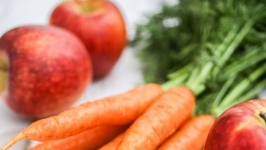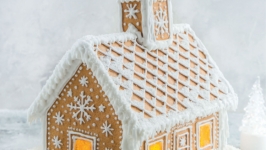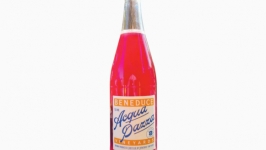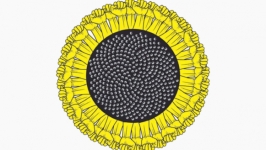Feed the Birds
Anyone who has watched the 1964 classic film Mary Poppins will surely recall the lyrics from one of its most famous songs:
“Come feed the little birds, show them you care. And you’ll be glad if you do. Their young ones are hungry. Their nests are so bare.”*
The “little old bird woman” who sang it was right: Feeding the birds is thoughtful and rewarding, especially in winter. It can be an amusing pastime and our feathered friends will return the favor by entertaining you all winter long.
Birds have a hard life. Most songbirds only have a 25 percent chance of surviving their first year. After that, they only have a 50 percent chance of surviving the next. While songbirds can live up to 17 years, most don’t make it to their second birthday. Accidents, including window collisions, along with cats, disease, and loss of food sources due to habitat destruction and climate change, have contributed to a 50 percent decline in the average bird population in the last four decades. So yes, feed the birds. The additional nutrition can be a matter of life or death.
Dispelling Myths
So why don’t more people feed the birds? Let’s dispel some myths that often keep people from putting out feeders.
It is false that feeding birds in the fall keeps them from migrating. Migration is driven by instinct and length of day.
It is false that feeding birds makes them lazy and unable to fend for themselves. In fact, no matter how good your food is, they will still forage for seed, spiders, and insects and their pupae. Birds only get about a third of their food from feeders.
It is false that leaving your feeders empty if you are away is bad for the birds. They will just go elsewhere. Most likely yours is not the only feeder in your neighborhood where they can feast.
While it is true that local red tail and cooper hawks may come to your feeder and hunt for those very birds you are feeding, you are not killing more birds by having a feeder. That hawk would have eaten a songbird somewhere else that day. Hawks have to eat, too. It is all part of the food chain. And it is really awesome to see these hawks in your backyard. If you prefer to discourage the hawks, position your feeder beneath large trees or in semi-sheltered spots to provide good cover for the songbirds.
How to Feed
Pay a little extra for top-quality seed. Read the ingredients. Just like us, birds would rather not eat something with a lot of filler. The best seed mixes usually contain some combination of black-oil sunflower, peanut bits, and safflower, nyjer, or mealworms. Cheaper mixes use millet and flax seed that most birds won’t eat, and those seeds just lie on the ground breeding fungus.
Keep feeders either closer than three feet from your window or 30 feet away. This prevents birds from accidentally flying into the glass. When a bird hits a window, at best they lie stunned on the ground for a bit. At worst, they die. I’ve experienced both. I have a window that faces south, and even with the feeder 15 feet away, I would get occasional strikes. I solved the problem with a sticker kit from Feather Friendly (featherfriendly.com). Small dots spaced three inches apart now cover my window and, while they don’t show much, they definitely work!
Provide water. Birds can get their water from snow, but it takes energy to warm it up to body temperature, and they need to conserve all their energy. Place a small immersion heater in your basin to keep the water from freezing. It will turn off when the water hits 40 degrees, thus using very little energy. Replace the water every few days to keep it fresh. I keep the bottom of my birdbath filled with small stones, so the birds can drink in winter but not bathe.
By planting the right native plants (see sidebar) you can attract birds to your yard in wintertime without supplemental feeding. Birds are fussy, evolving over millennia with specific plants to provide calories in the fall for their long migration, or protein in the spring for rearing young.
TO HELP YOU LEARN THE NAMES OF THE BIRDS AT YOUR FEEDER, TRY MY FAVORITE PHONE APP: THE AUDUBON BIRD GUIDE APP. IT IS FREE AND INCLUDES A COMPLETE FIELD GUIDE TO OVER 800 NORTH AMERICAN SPECIES.
Know Your Birds
Research has shown that when we know the names of the animals and plants we come across we tend to be more connected to them. In her recently updated book Braiding Sweetgrass: Indigenous Wisdom, Scientific Knowledge and the Teachings of Plants (Milkweed Editions, 2020), Robin Wall Kimmerer says, “Names are a way we humans build relationships, not only with each other but with the living world.” Not knowing “would be a little scary and disorienting—like being lost in a foreign city where you can’t read the street signs.”
To help you learn the names of the birds at your feeder, try my favorite phone app: The Audubon Bird Guide App. It is free and includes a complete field guide to over 800 North American species. The app allows you to punch in some easy characteristics to describe the bird you are looking at, and it keeps narrowing down a set of photos until you have one of the bird you are looking at. It gives a great description, and you can also listen to the bird’s songs and calls.
While watching your birds, it is great fun to join a citizen science program to help scientists around the world monitor bird populations. Consider participating in FeederWatch’s November— April survey (feederwatch.org). Count the birds in your yard for as long as you like on days of your choosing and enter the counts online. There is a small fee for this, but you are provided with support materials to make it an educational experience for you and your family.
So, let’s feed the birds. Especially in winter. (I never feed in summer because my yard already is full of their favorite foods: berries, seeds, and insects.) Starting in November, I set out my feeders and my birds delight me all winter long.
*”Feed the Birds” by Richard M. Sherman /Robert B. Sherman, 1964
FEATHERED FRIENDS’ FOOD FAVORITES
Add these native plants to your landscape and attract birds all year long.
SPARROWS: Native grasses like little bluestem and switchgrass. The seeds provide food; the stalks offer nesting habitat and shelter.
CARDINALS, GROSBEAKS AND TANAGERS: Sunflowers, elderberries, and serviceberries
CROWS AND JAYS: Oak and beech. (OK, you have to be patient here, as these trees take years to mature.)
WOODPECKERS: Pine, cherry, hickory, and oak, because they attract insects. Suet feeders in winter. Mostly insects, so leave dead trees in place.
CHICKADEES AND TITMICE: Birch and sumac. And insects, see above.
FINCHES: Composite flowers (daisies, sunflowers, thistles, and asters) and evergreens: pine, spruce, and hemlock.
ROSE-BREASTED GROSBEAK: Elderberry
EASTERN BLUEBIRD: Winterberry holly












